The Work Goes On
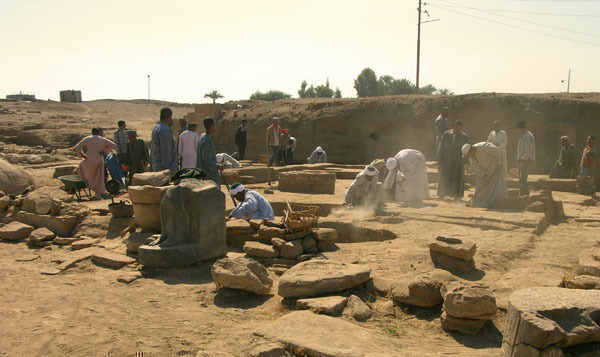
This week we moved a couple of teams of workmen from the Taharqa Gate (where working space is getting a little constricted) to the excavations north of Mut’s 1st Pylon. We now have teams working both on the structures built against the pylon face and in the area bounded on the north by the remains of Temple A’s columned porch and on the west by the Mut Temple’s East Porch.
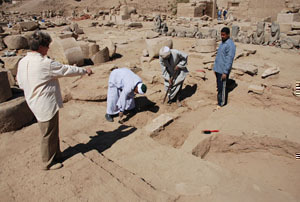
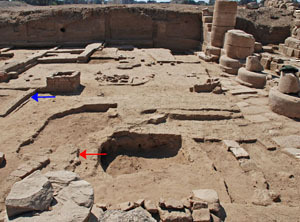
On the left, Elsie stands on a mass of mud brick in the south of this area and points at a row of limestone blocks extending south from the remains of Temple A’s porch (behind the worker in the black trousers). On the right is a view to the south of the whole area at the end of Wednesday, with the Temple A porch in the foreground, the East Porch to the right, and the structures against the pylon in the rear. We now have a second row of limestone blocks (red arrow) with a mud brick wall further to the east (blue arrow). The pits (or animal holes) that riddle the area make it difficult to sort out how all these features relate to each other. We have also not yet determined how this area relates to the buildings to the south.
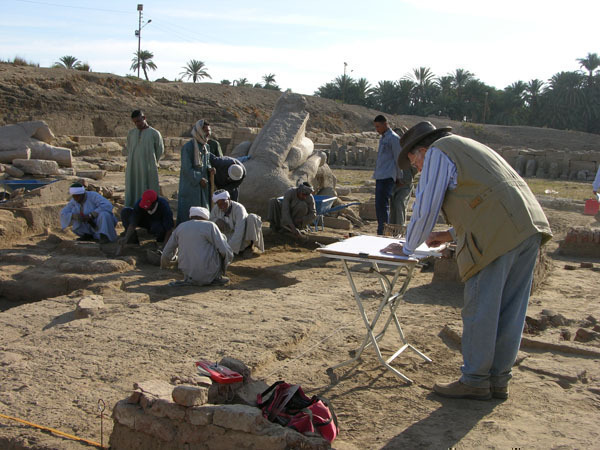
What has been uncovered is at least clear enough to be mapped, so on Thursday morning Bill got to work. It takes great concentration to be able to map while work is going on all around you, but Bill is up to the task.

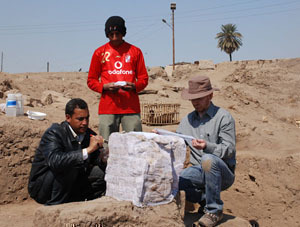
On Saturday we were very happy to welcome the last member of our team: John Steele, a conservator from the Detroit Institute of Arts (left). His first task was to treat the fragile inscribed limestone block described by Richard last week. On the right, he and Khaled wrap the block so that it can be moved (John will be describing his work in more detail in a forthcoming posting). Khaled’s assistant, Feisal, wears a soccer shirt of Abu Trika, a great Egyptian soccer star. Soccer is a passion in Egypt, and we cheered along with our friends and colleagues when Egypt won the Africa Cup of Nations for a record 6th time on Sunday. Abu Trika (number 22) scored the winning goal.
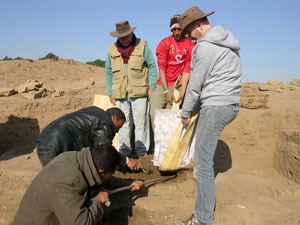

With the block wrapped, our inspector Osama and Khaled carefully removed the earth under it (left), with Bill observing. As the earth was removed, John and Feisal supported the block with a heavy nylon sling. Eventually a wooden support was slid under the block (right) and it was safely moved to a place where it can be treated further.
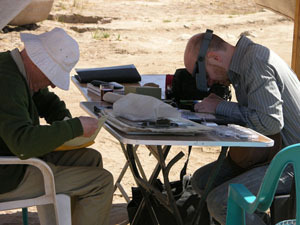
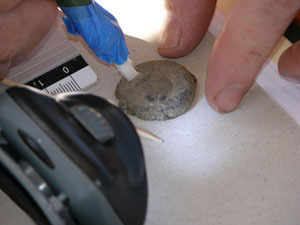
Once that had been taken care of, John could join Ben at the work table to start on some of the season’s small finds (left), among them a copper alloy coin (right) that we hope will be identifiable.
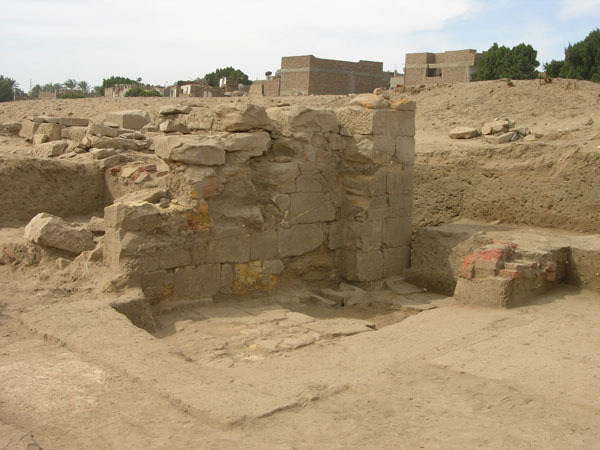
With the limestone block out of the way, we could get back to work on the Taharqa Gate and clear its south wing down to the paving. This photo, looking southwest, also shows the foundations of the southern room of the building that blocked the gate, something that had not been clear until this point. The walls were built of a combination of baked brick and mud brick.
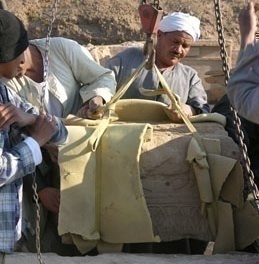
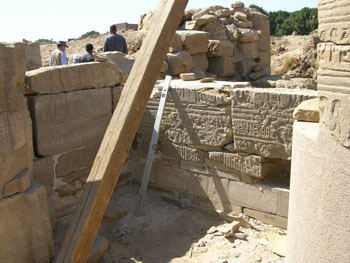
Chapel D’s walls are rising at a rapid pace. On Saturday, the second course of the south wall was lifted into place (left). By Tuesday (right) the south wall was essentially finished and the first two blocks of the south end of the west wall were also in place. The level leaning against the west wall is used to level the blocks both horizontally and vertically.
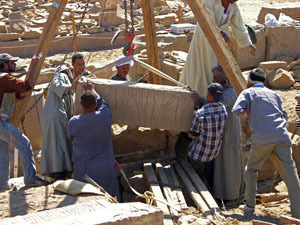
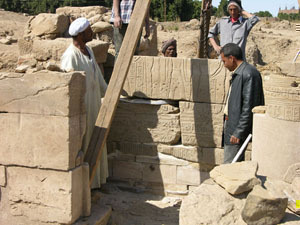
On Wednesday the masons and their and crew used the siba to move one of the largest blocks, which had to be rotated into position as well as lifted (left). Khaled inspects the work at the end of the day (right) to be sure that the figures line up properly.
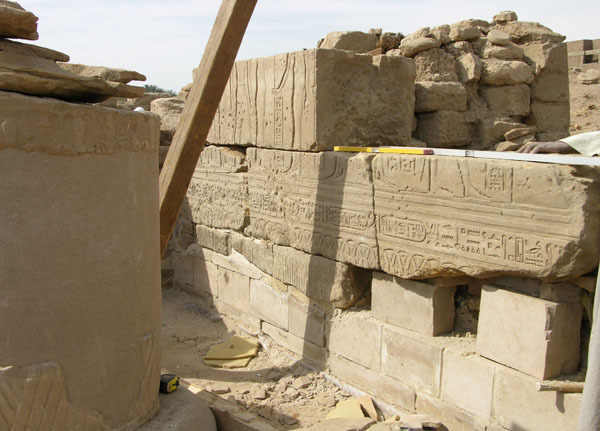
And here is the wall at the end of the week. The figures of the first scene are now complete to their shoulders and the block with the feet of the next scene is in place. The frieze of lotus and papyrus plants below this scene will be installed next, which may seem an odd way to rebuild a wall. However, these blocks are so badly worn that they can no longer support the weight of the upper parts of the wall so they are installed last, supported by the new foundations.
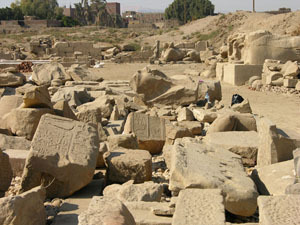

Several years ago we uncovered a colossal quartzite head of Amunhotep III (Akhenaten’s father) in the ruins of the Mut Temple’s East Porch. We moved it to the outdoor block storage area nearest the Precinct entrance, where it has been lying on its back ever since (left photo, center). It is a magnificent, if unfinished, sculpture that deserves to be seen, so on Thursday Richard had it stood upright. Osama and Khairy, one of our best workmen, admire the result. Standing up this sculpture is one small step in the process of making the site and its monuments more accessible to visitors when the Precinct is eventually re-opened.
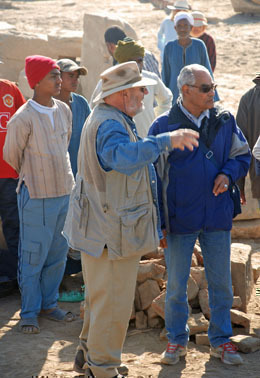
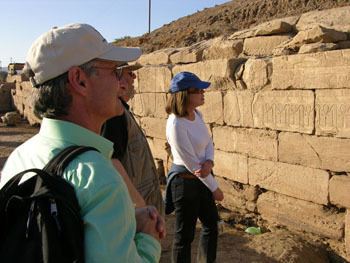
We were pleased to welcome some special visitors to the site on Wednesday. In the morning, Dr. Farouk Gomaa (to Richard’s right) and part of his team came to see us. He is currently working in the tomb of Montuemhat, who you may recall is of special importance to the Mut Precinct. That afternoon it was a special treat to show the site to Ms. Ellie Cullman, a Trustee of the Brooklyn Museum, and her husband Edgar who were on their first trip to Egypt; here they are admiring the 25th Dynasty birth scenes in Temple A.
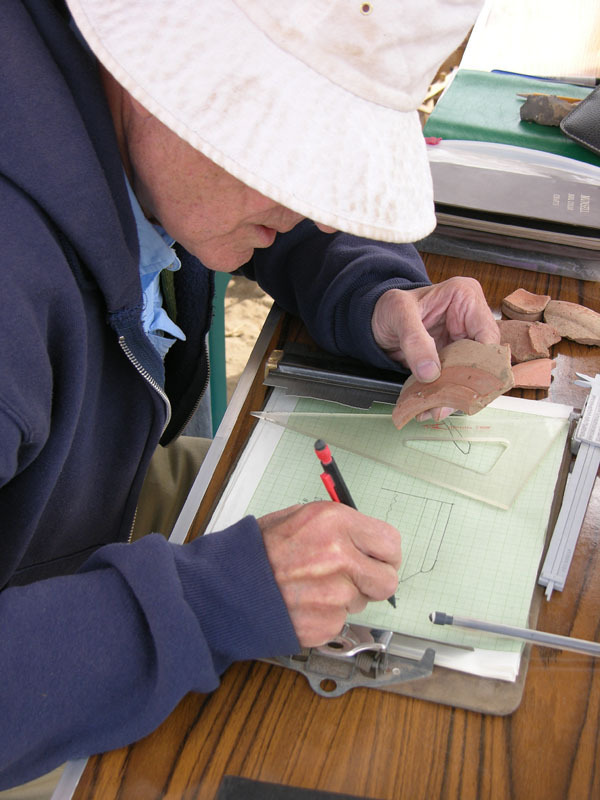
We are sorry to be saying goodbye to Ben Harer, who is returning to the States on Saturday morning. Ben has been indefatigable in drawing pots, right up to the last minute of the day on Thursday. We will miss him and wish him a safe trip home.
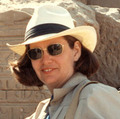
Mary McKercher holds a BA in Ancient Near Eastern Studies (specializing in Egypt) from the University of Toronto and is also a trained archaeologist. In 1979 she joined the Brooklyn Museum’s expedition to the Precinct of the Goddess Mut at South Karnak as photographer and archaeologist, roles she continues to fill. She has contributed to the Mut Expedition’s “Dig Diary” since it began in 2005, and put together the photographs for the 8 Mut Expedition photo sets on the museum’s Flickr site. With her husband, Richard Fazzini, she has also researched and written about the West’s ongoing fascination with ancient Egypt, commonly known as Egyptomania.
